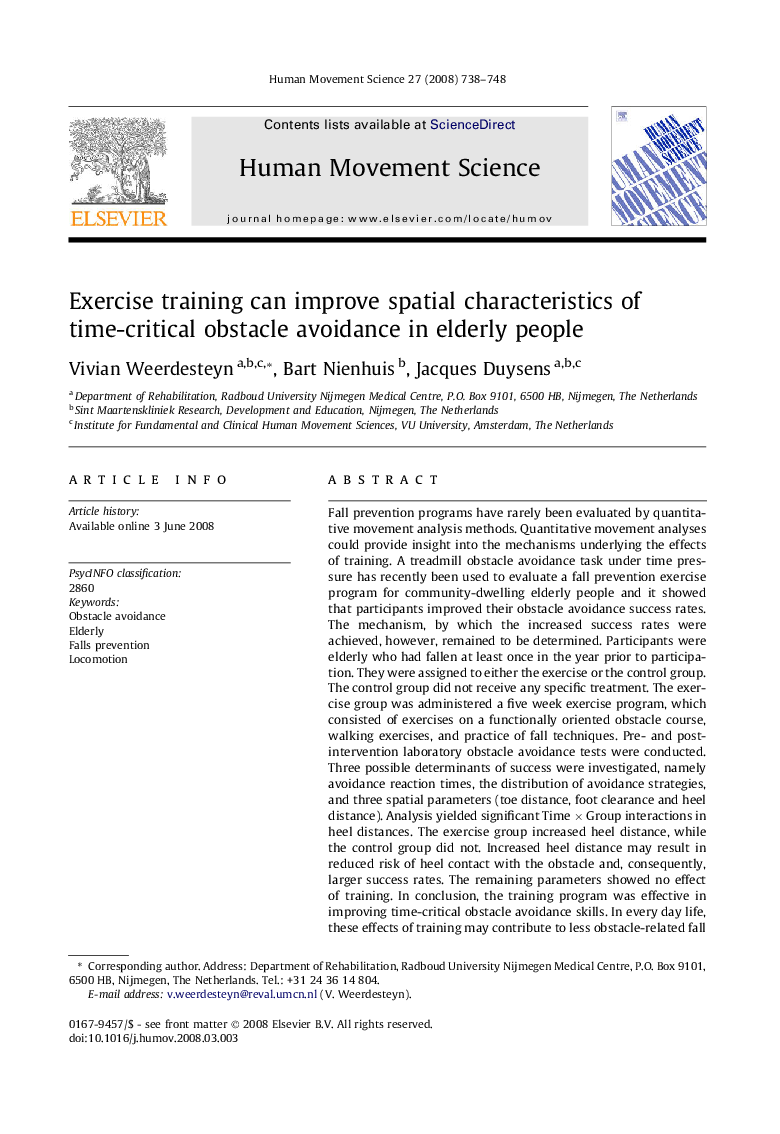| Article ID | Journal | Published Year | Pages | File Type |
|---|---|---|---|---|
| 928888 | Human Movement Science | 2008 | 11 Pages |
Fall prevention programs have rarely been evaluated by quantitative movement analysis methods. Quantitative movement analyses could provide insight into the mechanisms underlying the effects of training. A treadmill obstacle avoidance task under time pressure has recently been used to evaluate a fall prevention exercise program for community-dwelling elderly people and it showed that participants improved their obstacle avoidance success rates. The mechanism, by which the increased success rates were achieved, however, remained to be determined. Participants were elderly who had fallen at least once in the year prior to participation. They were assigned to either the exercise or the control group. The control group did not receive any specific treatment. The exercise group was administered a five week exercise program, which consisted of exercises on a functionally oriented obstacle course, walking exercises, and practice of fall techniques. Pre- and post-intervention laboratory obstacle avoidance tests were conducted. Three possible determinants of success were investigated, namely avoidance reaction times, the distribution of avoidance strategies, and three spatial parameters (toe distance, foot clearance and heel distance). Analysis yielded significant Time × Group interactions in heel distances. The exercise group increased heel distance, while the control group did not. Increased heel distance may result in reduced risk of heel contact with the obstacle and, consequently, larger success rates. The remaining parameters showed no effect of training. In conclusion, the training program was effective in improving time-critical obstacle avoidance skills. In every day life, these effects of training may contribute to less obstacle-related fall incidents in elderly. In addition, these findings could indicate that the execution of other time-critical events, like an actual fall, could also be improved by training.
